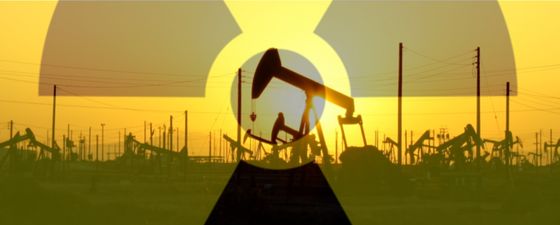What is NORM?
 Anna Kaniewska, senior environmental specialist at Golder Associates, has extensive experience from unconventional and conventional oil/gas operations in Europe, Asia and the Middle East.Naturally occurring radioactive material (NORM) describes radioactive elements that are found in low concentrations in the earth’s crust. Shale rocks typically contain many different kinds of radioactive isotopes, such as uranium, lead, or potassium. NORM also exists in air, water, soil and rock. Even food like bananas, Brazil nuts and carrots can contain them.
Anna Kaniewska, senior environmental specialist at Golder Associates, has extensive experience from unconventional and conventional oil/gas operations in Europe, Asia and the Middle East.Naturally occurring radioactive material (NORM) describes radioactive elements that are found in low concentrations in the earth’s crust. Shale rocks typically contain many different kinds of radioactive isotopes, such as uranium, lead, or potassium. NORM also exists in air, water, soil and rock. Even food like bananas, Brazil nuts and carrots can contain them.
In certain types of geology, such as organic-rich shales, higher levels of NORM occur, with elements like uranium often bonding to organic material and elements like potassium and thorium bonding to clays. From our work in Europe, we know that NORM-rich geology is typical in many European shale plays.
NORM can be brought to the surface by many types of human activity and the risks are already well understood and managed across the different extractive industries. Operators must ensure workers are protected against inhalation, ingestion and prolonged external exposure to NORM-rich waste. For conventional oil and gas operations, there are well-established guidelines for dealing with NORM; and shale operators follow these industry standards.
Why is NORM relevant for shale operations?
Generally, NORM found in shale operations is below the common safety limits of radioactive exposure. The waste produced in shale gas operations will usually contain low levels of NORM and operators can protect nature and people against unwanted exposure by following regulatory guidelines and best practices established by international organisations such as the IEA and OGP.
Flowback water from hydraulic fracturing can contain significantly high levels of NORM, so shale gas developers have to ensure that NORM is managed appropriately, especially within their water management plan. Our experience shows that water management in a shale gas project can best be understood as a lifecycle or supply chain, with different kinds of risks at different stages; the weakest link represents the greatest risk. A comprehensive water management plan including thorough wastewater monitoring will be able to account for these risks, and will help operators identify feasible and cost-effective solutions.
What preventive measures can operators take?
NORM is not unique to shale gas extraction – its management has been used in mining operations for decades. An essential starting point for any oil and gas operation, including shale gas and oil exploration, is a comprehensive environmental impact assessment, which is also essential for securing operating permits, including a social licence from local communities.
The environmental impact assessment, along with supporting baseline studies and geological investigations, can then be used to identify which specific preventive measures can be used to mitigate the potential impact on the environment, for example through NORM, and to ensure the highest levels of workers’ health and safety.
How should operators manage NORM risks?
Once an operation is underway, the risks from NORM should already be very small due to strong preventive measures put in place at earlier stages. As a project unfolds, however, operators should still use technologies to ensure the NORM risk is continually monitored, managed and kept at a minimal level. These include settlement tanks and water treatment facilities, which form part of any drilling and production operation. At the project planning stage, appropriate disposal and treatment routes will need to be identified. The legislative controls vary across jurisdictions but all are aimed at not exceeding the common background levels of radioactivity in the environment.
In Europe, shale operators can learn from mining about handling NORM, as companies with experience of handling coal residues and coal mine water discharge have transferable knowledge, particularly related to worker safety, decontamination of equipment and project closures.
How should shale operators handle waste and wastewater with NORM?
In shale gas operations, flowback water can be recycled for ongoing use in hydraulic fracturing operations, but it will eventually have to be disposed of following treatment. Additionally, leftover waste from the water treatment procedures and condensate from oil and gas separators must also be transported away on a regular basis. An adequate water management plan, including transport and disposal of wastewater, is one of the essential environmental protection measures that operators should take. Even without high levels of NORM presence, it is crucial to get this right.
What other advice can you give shale developers?
If operators follow best practice, the environmental risks involved are manageable. While NORM is an issue, it is one that the industry is very familiar with. By properly managing flowback water, condensates and other wastes, companies can mitigate the risks to their staff and the environment.





